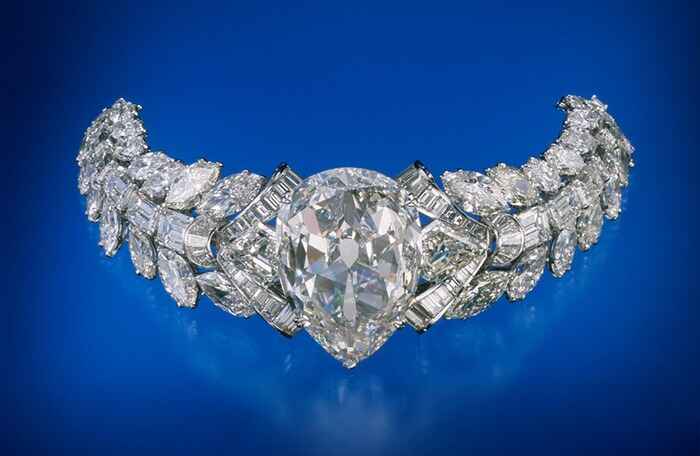The Excelsior Diamond is a gem-quality diamond and was the largest known diamond in the world from the time of its discovery in 1893 until 1905 when the Cullinan Diamond was found.
It was founded on June 30, 1893, at the Jagersfontein Mine in South Africa, 130 kilometers (81 miles) southeast of Kimberley whose fame as a diamond mining center always overshadowed that of Jagersfontein. It had a blue-white tint and weighed 971 old carats or 995.2 metric carats (or 194 g). The Excelsior rates as the fourth largest rough diamond of gem quality ever found. It was ultimately cut into ten stones weighing from 13 to 68 carats. (2.6 to 13.6 g).

The Excelsior Diamond was found on June 30, 1893, at the Jagersfontein Mine in the Orange Free State, one of the South African Republics during the second half of the 19th century, by a worker in a shovelful of gravel he was loading into a truck. Instead of handing it over to his overseer, he delivered it directly to the mine manager, who rewarded him with £500 in cash and a horse equipped with a saddle and bridle. On the day of the diamond’s discovery, the contract between the mining company and the syndicate of firms in London that purchased its diamonds expired. This may have contributed to the fact that its discovery was not reported in any of the prestigious British newspapers, and the diamond, despite its fine quality and exceptional size, remained largely unremarked upon. It was shipped to the London offices of Messrs Wernher, Beit, and Company, one of the members of the diamond buying syndicate, with the mining company retaining a 50 percent share in the ownership of the diamond. Wernher, Beit attempted to insure the diamond for £40,000 but eventually settled for £16,250.
In 1895 the Excelsior was joined by another very large diamond from the Jagersfontein Mine, first called the Reitz Diamond after the President of the Orange Free State, but soon renamed the Jubilee Diamond, in honor of Queen Victoria’s Diamond Jubilee. For reasons that remain obscure, this smaller diamond weighing only 650.80 carats overshadowed the Excelsior; one reason speculated is that the Excelsior was perceived to be far too large, and of quality too superior, for any prospective buyer. The consequence was that it was sent to. J. Asscher in Amsterdam, in 1903, to be cut into ten smaller stones.

